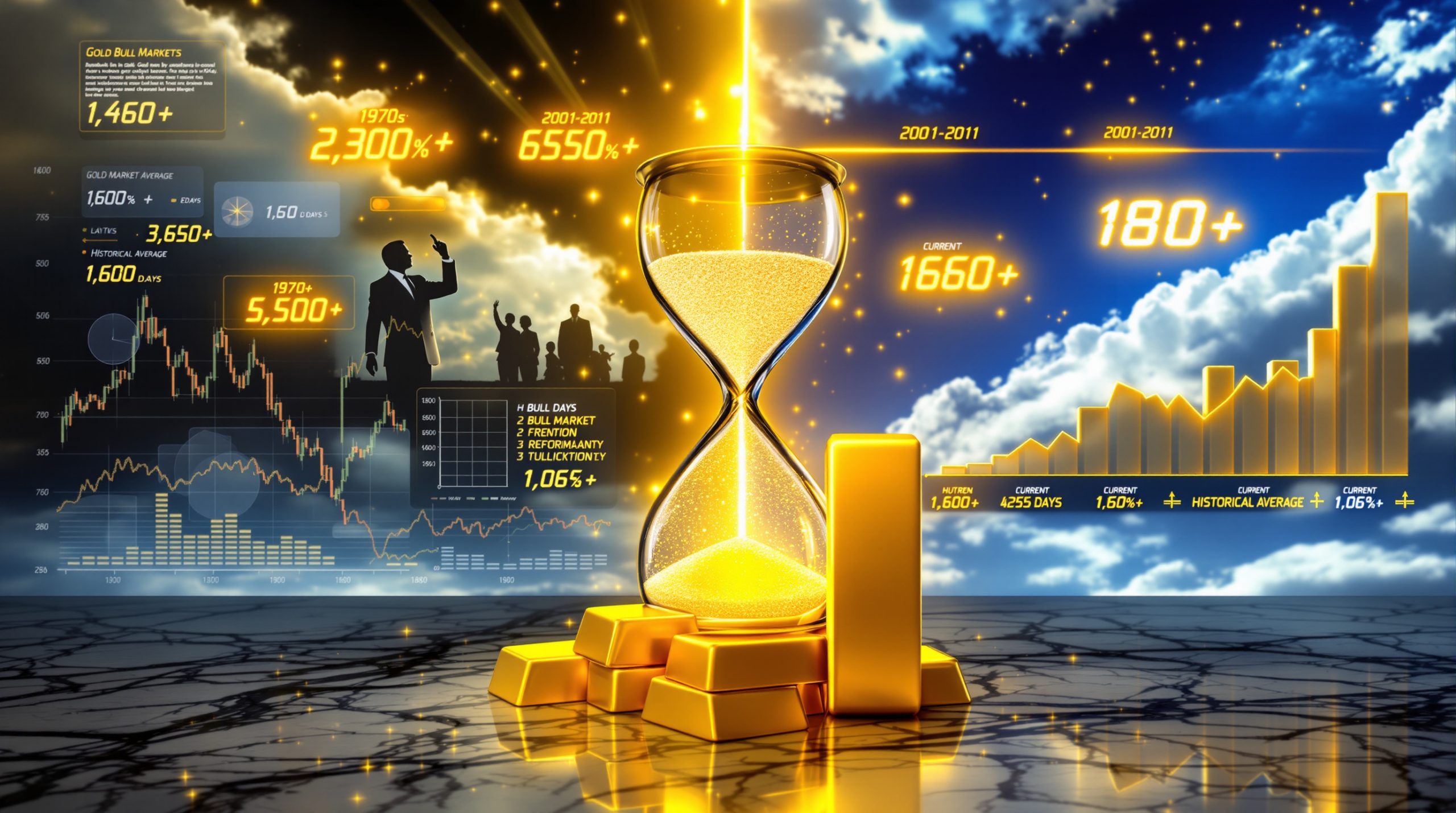Understanding the Current Gold Market Landscape
Gold markets experienced unprecedented volatility in October 2025, with prices reaching historic heights above $4,300 per ounce before settling around $3,980-$4,000. This dramatic movement represents more than a simple market correction; it signals a fundamental shift in how investors, institutions, and central banks view precious metals in an increasingly uncertain economic environment. Furthermore, the current landscape reflects conditions that support optimistic gold price forecast projections for the remainder of 2025.
Record-Breaking Performance Analysis
The precious metals market has demonstrated extraordinary strength throughout 2025, with gold price forecast 2025 scenarios consistently being exceeded by actual market performance. Year-to-date gains have surpassed 55% through October, establishing new benchmarks for institutional and retail investor interest. Additionally, this performance has validated the most bullish record-high gold analysis conducted earlier in the year.
This performance trajectory places gold in rare company among asset classes. When compared to previous bull market cycles from 1979-1980 and 2008-2011, the current rally shows both similarities and distinctive characteristics:
• Velocity of ascent: The climb from $2,000 to over $4,000 occurred in approximately 18 months
• Breadth of participation: Unlike previous cycles dominated by retail panic buying, institutional demand has provided steady support
• Geographic distribution: Central bank purchases span multiple continents, creating diversified demand patterns
• Technical resilience: Despite periodic corrections, support levels have consistently held above previous resistance zones
The recent pullback from peak levels, described by market analysts as the most significant correction in over a decade, reflects natural profit-taking rather than fundamental weakness. Professional traders who accumulated positions during the rapid ascent have begun realizing gains, creating temporary volatility that obscures underlying strength.
Key Market Drivers Reshaping Gold Demand
Central bank accumulation patterns have emerged as the dominant force supporting gold price forecasts for 2025 and beyond. Twenty-three nations added to their gold reserves during the first half of 2025, representing a coordinated shift away from traditional reserve compositions.
This institutional demand operates on different timescales than speculative trading. Central banks typically accumulate over months or years, providing steady buying pressure that supports price floors during corrections. The 900 tonnes of expected annual purchases in 2025 represents sustained institutional commitment regardless of short-term price movements.
Exchange-traded fund dynamics have similarly transformed market structure. The reported 880% year-over-year surge in inflows, reaching $14 billion in September 2025, demonstrates how traditional portfolio allocation models are being reconsidered. Institutional investors previously satisfied with 2-5% precious metals exposure are expanding allocations as monetary policy uncertainty persists.
This shift from traditional assets reflects broader concerns about currency debasement, fiscal sustainability, and the long-term purchasing power of paper assets. When major institutions redirect hundreds of billions from bonds and stocks into precious metals, it creates sustained upward pressure on gold price forecast 2025 projections. Consequently, many analysts are revising their gold market performance expectations upward.
Which Economic Forces Will Shape Gold's 2025 Trajectory?
Federal Reserve Policy Impact Assessment
The Federal Reserve's monetary policy stance represents the most significant variable influencing precious metals pricing through late 2025. Current market conditions suggest additional rate cuts remain likely, with inflation persisting around 3% despite previous policy interventions.
This creates a unique economic environment where real interest rates (nominal rates minus inflation) remain compressed or negative. Historically, such conditions provide substantial tailwinds for precious metals, as the opportunity cost of holding non-yielding assets diminishes.
Key Federal Reserve considerations affecting gold price forecast 2025 scenarios include:
• Terminal rate uncertainty: Markets remain divided on how low rates can go without reigniting inflation
• Balance sheet policy: Quantitative easing or tightening decisions directly impact money supply and currency strength
• Communication strategy: Forward guidance affects market expectations and precious metals positioning
• Independence concerns: Political pressure regarding rate decisions could undermine currency confidence
The interaction between monetary policy and fiscal policy creates additional complexity. While the Federal Reserve may prefer higher rates to combat inflation, government financing needs and economic growth concerns push toward accommodation. This policy conflict often resolves in favor of easier monetary conditions, supporting precious metals demand.
Geopolitical Risk Factors
International tensions continue shaping safe-haven demand patterns, though their impact on gold price forecast 2025 projections varies with political developments. The recent progress on US-China trade negotiations temporarily reduced risk premiums, contributing to gold's October correction from record highs.
However, geopolitical risks extend beyond bilateral trade relationships. Structural tensions involving technology transfer, territorial disputes, and economic sovereignty create persistent uncertainty that supports precious metals allocation. Even successful trade negotiations address immediate commercial concerns without resolving underlying strategic competition.
Global supply chain vulnerabilities exposed during recent disruptions have prompted both governments and corporations to reconsider dependency on single-source suppliers or regions. This reshoring and friend-shoring trend requires substantial capital investment while potentially increasing production costs, both factors that historically correlate with precious metals strength.
The ongoing government shutdown in the United States, now in its fourth week, demonstrates how domestic political dysfunction can create international currency concerns. When 42 million Americans face SNAP benefit disruptions starting November 1st, it highlights the political challenges of fiscal management that ultimately influence monetary policy and precious metals demand.
Fiscal Policy Pressures
Government deficit spending has reached levels that concern both domestic and international observers. The characterization of current Washington policies as "unorthodox" reflects unprecedented combinations of fiscal expansion and monetary accommodation occurring simultaneously.
These fiscal pressures manifest in several ways affecting gold price forecast 2025 scenarios:
Debt Service Costs: Rising interest payments consume increasing portions of federal budgets, limiting fiscal flexibility and potentially forcing monetary accommodation to reduce debt burdens.
Currency Debasement Risks: Persistent deficits financed through money creation raise long-term purchasing power concerns that drive precious metals demand.
Political Sustainability: When debt service approaches or exceeds discretionary spending, political pressure for monetary solutions intensifies.
International Confidence: Foreign holders of dollar-denominated assets monitor fiscal trends when making reserve allocation decisions.
The combination of massive fiscal deficits, rising debt, and efforts to push rates lower despite inflation hovering around 3% creates conditions that historically favor precious metals. Unlike previous cycles where either fiscal or monetary policy provided accommodation, current circumstances involve both simultaneously. Moreover, these conditions enhance the appeal of gold as inflation hedge strategies among institutional investors.
What Are Leading Financial Institutions Predicting for Gold?
Wall Street's Bullish Consensus Analysis
Major financial institutions have dramatically revised their gold price forecast 2025 targets upward, with several now projecting sustained moves toward $5,000 per ounce by 2026. This represents a fundamental shift from historical skepticism toward precious metals among traditional Wall Street firms. According to recent analysis by Morgan Stanley, the combination of macroeconomic factors and institutional demand could drive prices substantially higher than previously anticipated.
| Institution | 2025 Target | 2026 Target | Primary Drivers |
|---|---|---|---|
| Bank of America | $4,400 average | $5,000+ | Fiscal deficits, central bank demand |
| Goldman Sachs | $3,900-4,000 | $4,900 | Investment demand surge |
| Societe Generale | $4,200-4,400 | $5,000 | Monetary policy divergence |
| J.P. Morgan | $3,675 Q4 | $4,000 mid-year | Recession hedge positioning |
These forecasts reflect sophisticated modeling that incorporates multiple variables affecting precious metals pricing. Bank of America's analysis specifically points to structural factors including government debt dynamics and central bank diversification trends as supporting sustained price appreciation.
The methodology underlying these projections typically combines supply-demand modeling with macroeconomic scenario analysis. Banks construct base case, optimistic, and pessimistic scenarios, then weight them according to perceived probabilities. Current consensus suggests base case scenarios involve continued precious metals strength rather than historical mean reversion.
Investment Demand Projections
Institutional analysis suggests investment demand will increase approximately 14% in 2025, matching the surge experienced throughout the previous year. This projection encompasses multiple investor categories, from sovereign wealth funds to pension systems to family offices reassessing portfolio allocations.
The drivers behind sustained investment demand include:
• Portfolio diversification requirements: Modern portfolio theory suggests higher precious metals allocations during periods of increased correlation among traditional assets
• Currency hedging needs: International investors seek protection against potential dollar weakness or strength depending on their base currency exposure
• Inflation protection: Real assets provide purchasing power preservation during periods of persistent price increases
• Liquidity preferences: Large institutions value precious metals' ability to be monetized quickly during crisis periods
Exchange-traded fund flows provide measurable evidence of this demand shift. The transition from modest inflows during 2023-early 2024 to the current $14 billion monthly pace demonstrates how quickly institutional sentiment can change when macroeconomic conditions align with precious metals fundamentals. Furthermore, Reuters reports that for the first time, annual forecasts for 2026 are topping $4,000 per ounce across multiple institutions.
Professional asset managers who previously maintained minimal precious metals exposure now face client demands for increased allocations. This creates sustained buying pressure independent of speculative trading or central bank purchases.
How Are Central Banks Influencing Gold's Future Price?
Global Central Bank Buying Trends
Central bank gold purchases represent the most significant structural change in precious metals markets over the past decade. The expected 900 tonnes of annual purchases in 2025 continues a pattern of diversification away from traditional dollar-heavy reserve compositions.
This coordinated shift spans multiple regions and reflects various strategic considerations:
Asian Central Banks: Countries including South Korea are reconsidering gold allocations after extended periods of minimal holdings. South Korea currently maintains just 104.4 tonnes of gold, representing 1.1% of its $419 billion in foreign reserves and ranking 41st globally.
European Institutions: Several European central banks have increased gold allocations as insurance against currency union risks and inflation pressures.
Emerging Market Buyers: Nations seeking to reduce dependency on any single reserve currency have accelerated precious metals accumulation.
Oil-Exporting Countries: Sovereign wealth funds from energy-exporting nations often increase gold holdings during periods of elevated commodity prices.
The strategic timing of central bank purchases demonstrates sophisticated market awareness. Rather than accumulating during price peaks, institutional buyers often increase activity during corrections, providing support that limits downside volatility.
Notable Central Bank Strategies
Central bank approaches to gold reserves vary significantly, with some nations viewing precious metals as essential portfolio components while others consider them costly anachronisms requiring storage and generating no yield.
South Korea's Potential Re-entry: After a 12-year hiatus since 2013, the Bank of Korea is signaling renewed interest in gold purchases from a "medium- to long-term perspective." This reconsideration follows their previous experience during 2011-2013, when purchases occurred near cycle peaks before prices declined substantially.
The Korean approach reflects lessons learned from earlier timing mistakes. Rather than making large purchases rapidly, they appear to favour gradual accumulation that takes advantage of price volatility. This methodology reduces average costs while building strategic reserves.
Philippines Contrarian Strategy: The Bangko Sentral ng Pilipinas has pursued the opposite approach, selling approximately 25 tonnes during the first half of 2024 while prices appreciated. This made the Philippines the world's largest central bank seller during that period, reducing holdings from 164 tonnes in late 2023 to around 128 tonnes by mid-2024.
BSP Governor Eli Remolona characterised this decision as taking advantage of elevated prices to boost dollar reserves, which reached a record $107 billion. The contrarian approach reflects concerns about gold's volatility and storage costs while prioritising liquid dollar reserves for economic management.
Reserve Diversification Implications
The broader pattern of central bank gold accumulation represents a gradual shift away from dollar-dominated reserve compositions that have prevailed since the Bretton Woods system. While this transition occurs slowly to avoid market disruption, its long-term implications are substantial.
Structural Demand Creation: Central banks typically hold reserves for decades, creating permanent demand removal from available supplies. Unlike speculative positions that can reverse quickly, sovereign purchases represent lasting supply absorption.
Price Floor Establishment: Coordinated central bank buying creates effective price floors during corrections. When professional dealers or retail speculators sell, central bank purchasing often provides support that limits downside moves.
Currency System Evolution: The gradual increase in gold's share of global reserves suggests movement toward a more multipolar monetary system where no single currency dominates completely.
These developments support sustained strength in gold price forecast 2025 scenarios regardless of short-term volatility or speculative positioning changes.
What Technical Factors Could Drive Price Volatility?
Supply-Side Constraints Analysis
Gold mining production faces structural limitations that support long-term price appreciation regardless of demand fluctuations. Unlike other commodities where increased prices can quickly incentivise expanded production, precious metals extraction requires years of development and substantial capital investment.
Exploration Timeline Challenges: Discovering and developing new gold deposits typically requires 7-15 years from initial exploration through production. This extended timeline means current price strength cannot generate meaningful supply increases until the 2030s.
Capital Intensity Requirements: Modern gold mining requires sophisticated technology and substantial infrastructure investment. Environmental regulations and permitting processes add complexity and cost to new project development.
Grade Deterioration Trends: Many existing mines face declining ore grades as higher-grade deposits become exhausted. This requires processing larger volumes of material to maintain production levels, increasing costs and environmental impact.
Geopolitical Mining Risks: Significant gold production occurs in jurisdictions with political instability or changing regulatory environments. These factors can disrupt supply chains and increase production uncertainty.
Secondary supply from recycling provides some flexibility, but represents a relatively small portion of total annual supply. Recycling typically increases when prices rise substantially, but rarely offsets primary production constraints.
Market Structure Considerations
The composition of gold market participants has evolved significantly, with important implications for price volatility and trend sustainability. Traditional speculative money that historically drove boom-bust cycles now represents a smaller portion of total demand.
Professional Dealer Positioning: Market makers and professional traders who provide liquidity often maintain relatively neutral positions, focusing on bid-ask spreads rather than directional speculation. Their sentiment regarding "overbought conditions" reflects technical rather than fundamental analysis.
Algorithmic Trading Impact: High-frequency trading systems now participate in precious metals markets, potentially amplifying short-term volatility while providing increased liquidity during normal market conditions.
Retail Speculator Behaviour: Individual investors who enter markets during rapid price appreciation often lack sophisticated risk management techniques. Their collective behaviour can create momentum surges followed by sharp reversals when market conditions change.
Institutional Portfolio Requirements: Long-term institutional buyers typically maintain positions regardless of short-term price movements, providing stability during volatile periods.
The balance among these participants influences how markets respond to economic news, policy changes, and geopolitical developments affecting gold price forecast 2025 scenarios.
Price Correction Scenarios
Historical analysis of precious metals cycles suggests corrections of 10-15% from peak levels are common during sustained bull markets. The recent pullback from over $4,300 to approximately $3,980 fits within normal correction parameters rather than indicating trend reversal.
Support Level Analysis: Technical analysis suggests potential support in the $3,500-$3,800 range, though fundamental factors may prevent testing these levels. Central bank purchasing and institutional demand often accelerate during price declines, providing natural stabilisation.
Recovery Timeline Expectations: Previous corrections during strong bull markets typically resolve within 2-4 months, assuming underlying fundamental drivers remain intact. Current conditions suggest recovery could occur more quickly due to institutional buying interest.
Volatility Pattern Recognition: Bull market corrections often involve initial sharp declines followed by sideways consolidation before resuming upward trends. This pattern allows late entrants to establish positions while early buyers maintain confidence.
Market participants who understand these dynamics can position appropriately for different scenarios while maintaining focus on longer-term precious metals fundamentals supporting gold price forecast 2025 projections.
Which Price Scenarios Are Most Likely for 2025?
Conservative Forecast Range ($3,400-3,800)
Conservative gold price forecast 2025 scenarios assume resolution of several current uncertainties in directions that reduce precious metals demand. This range reflects outcomes where economic stabilisation and geopolitical progress diminish safe-haven investment requirements.
Trade Agreement Success: Comprehensive US-China trade deals that address structural issues could reduce international tensions and currency hedging demand. Historical precedent suggests successful trade negotiations can temporarily reduce gold premiums.
Inflation Moderation: If Federal Reserve policies successfully reduce inflation toward 2% targets without triggering recession, real interest rates could increase enough to make yield-bearing assets more attractive relative to precious metals.
Economic Growth Acceleration: Strong GDP growth accompanied by employment gains might redirect investment flows toward productive assets rather than store-of-value alternatives.
Political Stability: Resolution of government shutdown concerns and bipartisan fiscal agreements could restore confidence in traditional policy frameworks.
However, conservative scenarios require multiple favourable developments occurring simultaneously. The probability of all necessary conditions aligning appears relatively low given current economic and political dynamics.
Moderate Bullish Scenario ($3,800-4,200)
Moderate bullish projections represent baseline institutional expectations incorporating mixed economic conditions and continued central bank accumulation. This range acknowledges ongoing uncertainties while avoiding extreme assumptions in either direction.
Balanced Economic Conditions: Mixed data showing some growth sectors while others struggle, creating neither clear recession nor robust expansion. Such environments typically favour portfolio diversification including precious metals allocation.
Steady Monetary Accommodation: Federal Reserve policies that maintain supportive conditions without aggressive easing or tightening. Gradual rate adjustments that keep real rates near zero support precious metals demand.
Continued Central Bank Buying: Sustained sovereign demand around current 900 tonnes annually provides steady underlying support regardless of speculative positioning changes.
Moderate Risk-On/Risk-Off Cycles: Alternating periods of investor optimism and concern create volatility within an overall upward trend as institutional allocations gradually increase.
This scenario aligns with most major bank projections and incorporates realistic assumptions about policy responses and market dynamics affecting gold price forecast 2025 outcomes.
Aggressive Bull Case ($4,200-5,000+)
Aggressive scenarios require significant economic disruption or policy errors that accelerate precious metals demand beyond current institutional projections. While less probable than moderate outcomes, such scenarios have historical precedent during crisis periods.
Crisis-Driven Demand Acceleration: Financial system stress, currency crises, or geopolitical conflicts that create sudden safe-haven investment surges. Previous crisis periods have generated rapid precious metals appreciation.
Monetary Policy Errors: Federal Reserve decisions that either trigger inflation acceleration or deflation risks, both of which historically support precious metals demand through different mechanisms.
Currency Debasement Acceleration: Fiscal crises that require monetary financing, creating conditions similar to previous periods of currency debasement and precious metals appreciation.
Supply Disruption Events: Mining production interruptions or transportation difficulties that reduce available supply while demand remains strong or increases.
Bank of America's $5,000 target by 2026 suggests such scenarios are considered possible though not necessarily probable. Institutional modelling typically incorporates low-probability, high-impact events that could drive extreme outcomes.
The key distinction between aggressive scenarios and moderate ones lies in the pace of change rather than direction. Both scenarios assume continued precious metals strength, but aggressive cases involve acceleration that exceeds current institutional expectations.
How Should Investors Position for Gold's 2025 Performance?
Portfolio Allocation Strategies
Professional wealth management approaches to precious metals allocation have evolved significantly as institutional acceptance has increased. Traditional 5-10% portfolio weights are being reconsidered as economic uncertainties persist and currency debasement risks intensify. Consequently, many advisers are reassessing gold investment strategies to accommodate changing market dynamics.
Conservative Risk Profiles (5-10% allocation): Investors primarily focused on wealth preservation with limited tolerance for volatility might maintain traditional precious metals weightings. This approach provides portfolio insurance without excessive speculation.
Moderate Risk Profiles (10-15% allocation): Balanced investors seeking growth with reasonable downside protection can increase precious metals exposure while maintaining diversification across asset classes. This range accommodates current institutional trends.
Aggressive Risk Profiles (15-25% allocation): Growth-oriented investors comfortable with volatility might emphasise precious metals during periods of monetary policy uncertainty and currency debasement concerns.
Crisis Positioning (25%+ allocation): Investors specifically concerned about systemic risks might allocate substantially higher percentages, accepting opportunity costs in exchange for protection against extreme scenarios.
The appropriate allocation depends on individual circumstances, risk tolerance, and beliefs about probability-weighted outcomes for different gold price forecast 2025 scenarios.
Risk Management Approaches
Successful precious metals investing requires understanding volatility patterns and implementing appropriate risk controls. Gold's tendency toward sustained trends interrupted by sharp corrections demands specific risk management techniques.
Position Sizing Discipline: Limiting individual precious metals positions to amounts that can be held through complete market cycles prevents forced selling during temporary corrections. Position sizes should reflect personal financial capacity rather than market enthusiasm.
Volatility Expectations: Gold price forecast 2025 scenarios suggest continued volatility around 15-25% annually, requiring psychological preparation for substantial price swings. Investors unprepared for such movements often make poor timing decisions.
Correlation Monitoring: During crisis periods, correlations between precious metals and other assets can change rapidly. Regular portfolio rebalancing maintains target allocations while taking advantage of relative price movements.
Time Horizon Clarity: Short-term trading approaches require different techniques than long-term wealth preservation strategies. Mixing time horizons often leads to suboptimal decisions during volatile periods.
Dollar-cost averaging during market corrections has historically provided better entry points than attempting to time exact price bottoms. Regular purchasing during 10-15% pullbacks reduces average costs while building positions gradually.
Investment Vehicle Comparison
Different precious metals investment approaches offer distinct advantages and limitations affecting suitability for various investor circumstances and objectives.
| Investment Type | Liquidity | Storage Costs | Counterparty Risk | Tax Treatment |
|---|---|---|---|---|
| Physical Gold | Moderate | High | None | Capital gains |
| Gold ETFs | High | Low | Moderate | Capital gains |
| Mining Stocks | High | None | High | Dividend + capital gains |
| Gold Futures | Very High | None | High | Mark-to-market |
Physical Gold Considerations: Direct ownership provides maximum security and no counterparty risk but requires storage arrangements and insurance. Transaction costs are higher than paper alternatives, making this approach suitable for long-term holdings rather than active trading.
ETF Advantages: Exchange-traded funds offer convenient exposure with high liquidity and low ongoing costs. However, they introduce counterparty risk and may not perform identically to physical metal during extreme market stress.
Mining Stock Dynamics: Gold mining equities provide leverage to precious metals prices but introduce operational, political, and management risks. They often outperform during bull markets but underperform during corrections.
Futures Contract Complexity: Derivatives offer maximum liquidity and leverage but require sophisticated understanding of contract specifications, margin requirements, and rollover procedures.
The optimal combination depends on investment objectives, risk tolerance, and operational preferences for each investor's specific circumstances.
What Long-Term Trends Will Extend Beyond 2025?
Structural Demand Evolution
Precious metals demand patterns are evolving beyond traditional jewellery and investment categories as technological applications expand and monetary system changes accelerate. These structural shifts support gold price forecast 2025 projections while creating additional longer-term demand drivers.
Technology Sector Applications: Electronic device proliferation, renewable energy infrastructure, and advanced manufacturing processes require increasing precious metals content. Unlike cyclical demand that fluctuates with economic conditions, technological applications represent permanent consumption.
Medical and Aerospace Uses: Specialised applications in medical devices, satellite technology, and space exploration create steady industrial demand independent of investment cycles. These sectors typically prioritise performance over cost considerations.
Green Technology Integration: Solar panels, electric vehicle components, and energy storage systems incorporate precious metals in quantities that scale with global environmental initiatives.
Emerging Market Consumption: As developing economies mature, household wealth accumulation traditionally includes precious metals acquisition for cultural and practical reasons.
These demand categories operate on different cycles than speculative investment, creating more stable underlying support for precious metals pricing regardless of financial market conditions.
Monetary System Transformation
The international monetary system continues evolving away from the post-Bretton Woods dollar-dominated framework established in the 1970s. This gradual transformation has profound implications for precious metals' role in global finance extending well beyond current gold price forecast 2025 scenarios.
Digital Currency Development: Central bank digital currencies (CBDCs) and cryptocurrency adoption create new payment mechanisms while potentially highlighting the importance of assets independent of digital systems. Rather than replacing precious metals, digital currencies might increase appreciation for physical value storage.
Reserve Currency Competition: The dollar's role as primary global reserve currency faces gradual challenges as international trade increasingly occurs in alternative currencies. This transition typically supports precious metals demand as central banks diversify reserves.
Financial System Complexity: Increasing interconnectedness and complexity in global financial systems create systemic risks that historically drive precious metals allocation as portfolio insurance.
Generational Wealth Transfer: As older generations transfer wealth to younger inheritors, asset allocation preferences may shift toward alternatives perceived as protection against system failures.
These monetary system changes occur over decades rather than years, creating sustained underlying trends supporting precious metals regardless of short-term economic cycles.
Five-Year Outlook Considerations
Extended precious metals projections must account for multiple scenarios and avoid overconfidence in specific price targets. However, structural factors suggest continued strength through 2026-2030 under most reasonable assumptions about economic and political developments.
Cyclical vs. Secular Trend Analysis: Current precious metals strength appears to reflect secular monetary system changes rather than purely cyclical investment flows. Secular trends typically persist for decades while cyclical patterns reverse within 3-7 years.
Multi-Decade Purchasing Power Analysis: Historical precedent suggests precious metals maintain purchasing power over extended periods despite substantial volatility. This characteristic becomes more valuable during periods of currency uncertainty.
Supply-Demand Rebalancing: Mining production constraints combined with sustained institutional demand suggest potential supply deficits that could support higher price levels throughout the remainder of the decade.
Policy Response Effectiveness: The ultimate success or failure of current monetary and fiscal policies will influence precious metals demand for years. Policy failures typically accelerate precious metals appreciation while policy successes might moderate demand growth without reversing trends.
Professional wealth managers increasingly view precious metals as permanent portfolio components rather than tactical positions, suggesting institutional demand will persist regardless of specific economic outcomes affecting gold price forecast 2025 projections.
Frequently Asked Questions About Gold Price Forecasts
Will gold reach $5,000 per ounce in 2025?
While several major financial institutions project $5,000 gold by 2026, most gold price forecast 2025 scenarios centre around $3,700-4,400 per ounce. The $5,000+ range represents aggressive scenarios requiring significant economic disruption, monetary policy errors, or accelerated currency debasement concerns.
Bank of America's analysis suggests such levels are achievable if investment demand increases 14% matching recent surge patterns, while central bank purchases continue around 900 tonnes annually. However, reaching $5,000 in 2025 would require crisis-driven acceleration beyond current baseline projections.
The probability of $5,000 gold in 2025 depends on several low-probability, high-impact events occurring simultaneously: severe geopolitical conflicts, Federal Reserve policy errors, or fiscal crises requiring monetary financing. While possible, such scenarios fall outside most institutional base case analysis.
What could cause gold to fall below $3,000?
Significant gold price declines below $3,000 would require fundamental changes in current economic and political conditions affecting precious metals demand. Several scenarios could potentially generate such outcomes:
Comprehensive Trade Resolution: Major trade deal breakthroughs that resolve structural US-China tensions while addressing technology transfer and territorial disputes could reduce safe-haven demand substantially.
Federal Reserve Policy Reversal: Aggressive interest rate increases that successfully reduce inflation to 2% without triggering recession could make yield-bearing assets attractive relative to precious metals.
Economic Growth Acceleration: Sustained GDP growth accompanied by productivity increases and employment gains might redirect investment flows toward productive assets rather than store-of-value alternatives.
Fiscal Responsibility Restoration: Bipartisan agreements that significantly reduce government deficits while addressing long-term debt sustainability could restore confidence in currency and traditional policy frameworks.
However, such scenarios require multiple favourable developments occurring simultaneously, which appears unlikely given current political and economic dynamics affecting gold price forecast 2025 scenarios.
How accurate are bank forecasts for gold prices?
Historical analysis of institutional gold price predictions reveals mixed accuracy, with forecasts providing better directional guidance than precise price targets. Major banks' precious metals research typically focuses on 6-18 month horizons where fundamental analysis proves most reliable.
Directional Accuracy: Banks generally identify trend directions correctly, particularly during sustained bull or bear markets. Current consensus around continued strength aligns with historical patterns during monetary policy uncertainty periods.
Price Target Precision: Specific price targets often prove less accurate than directional calls. Actual outcomes frequently exceed forecast ranges during crisis periods while falling short during normal market conditions.
Methodology Limitations: Bank forecasts typically incorporate known variables while struggling to predict low-probability, high-impact events that drive extreme price movements. This creates systematic underestimation of volatility.
Time Horizon Effects: Short-term forecasts (3-6 months) often reflect technical factors and positioning changes, while longer-term projections focus on fundamental supply-demand analysis.
Investors should treat institutional forecasts as educated ranges rather than precise predictions, with actual gold price forecast 2025 outcomes likely varying significantly from specific targets while maintaining directional consistency.
Should investors buy gold during price corrections?
Price corrections during precious metals bull markets historically provide attractive accumulation opportunities for long-term investors, though timing exact bottoms proves consistently difficult even for professional traders.
Dollar-Cost Averaging Benefits: Regular purchasing during 10-15% corrections from recent highs reduces average costs while avoiding timing mistakes. This approach has historically outperformed attempts to identify precise entry points.
Correction Frequency: Bull markets typically experience 3-5 significant corrections annually, providing multiple opportunities for strategic accumulation. Current $3,980 levels represent substantial discounts from $4,300+ peaks.
Volume Considerations: Corrections often involve increased trading volume as weak holders sell while strong holders accumulate. High-volume declines frequently mark temporary bottoms rather than trend reversals.
Risk Management: Position sizing during corrections should reflect individual financial capacity rather than market enthusiasm. Corrections can extend longer or deeper than anticipated, requiring psychological preparation for continued volatility.
Professional wealth managers often use corrections as rebalancing opportunities, maintaining target precious metals allocations while taking advantage of temporary price dislocations supporting favourable gold price forecast 2025 outcomes.
Investment Disclaimer: Precious metals investing involves significant risks including price volatility, liquidity limitations, and storage costs. Past performance does not guarantee future results. Investors should carefully consider their financial circumstances and risk tolerance before making precious metals investments. Professional financial advice should be sought for individual portfolio decisions.
Looking to Capitalise on Gold's Historic Bull Market?
Discovery Alert's proprietary Discovery IQ model delivers instant notifications about significant ASX mineral discoveries, including precious metals opportunities that could benefit from gold's unprecedented strength above $3,980 per ounce. Understand why major mineral discoveries historically generate substantial returns by exploring Discovery Alert's discoveries page, then begin your 30-day free trial to position yourself ahead of the market during these transformative gold market conditions.




